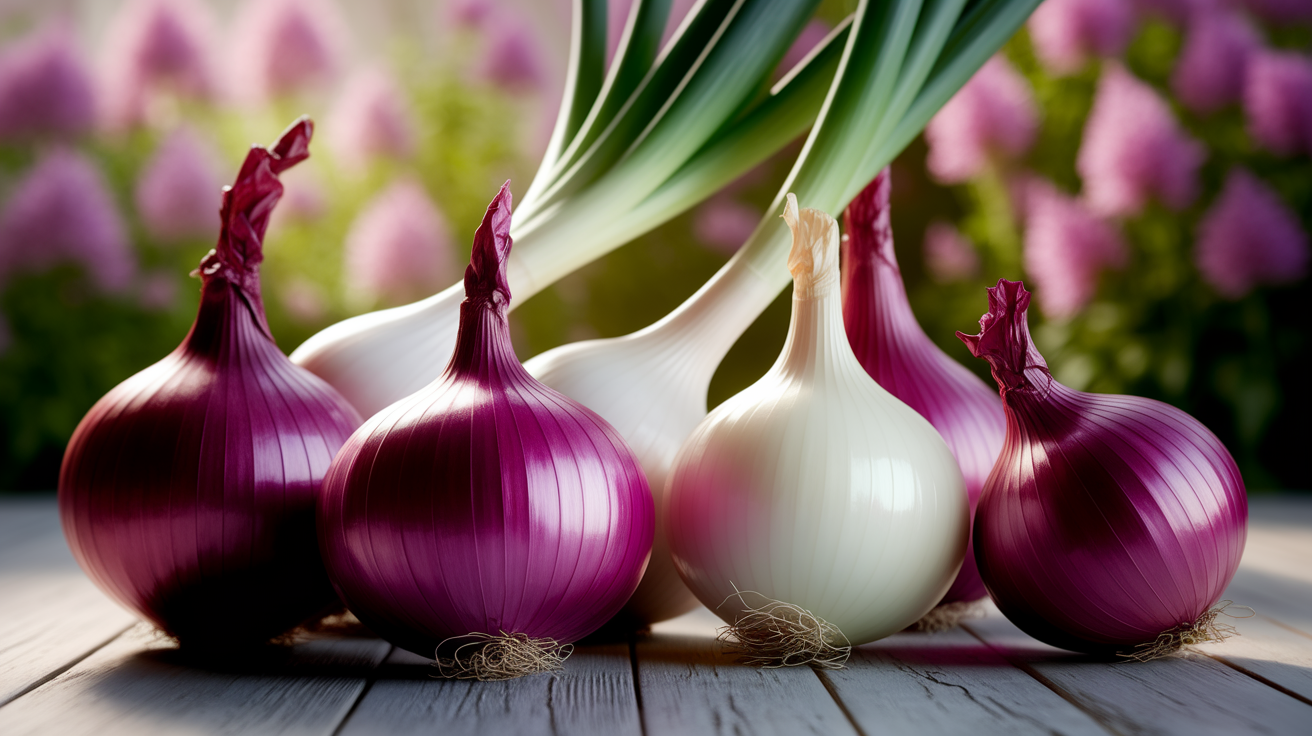Quick Answer: Onions make you cry because cutting them releases a gas called propanethial-S-oxide. This chemical irritant mixes with the water in your eyes to form a mild sulfuric acid, which stings your corneas and triggers your tear glands as a defense mechanism to flush it out.
Unveiling the Stinging Secret
It’s a familiar scene in kitchens everywhere: you place an onion on the cutting board, make the first slice, and within moments, your eyes are stinging and tears are streaming down your face. It feels like a personal attack from a humble vegetable. But what causes this sudden, involuntary crying? It’s not an emotional response, but a brilliant and surprisingly complex chemical defense.

Onions belong to the Allium genus, a plant family that also includes garlic, chives, and leeks. These plants absorb sulfur from the soil and store it in their cells as a defensive measure against pests. When an onion is damaged—say, by the blade of your knife—it unleashes its chemical arsenal. The star of this show is a volatile sulfur compound called propanethial-S-oxide. This tiny molecule is what scientists call a lachrymatory factor, a fancy term for any substance that makes you cry.
How Propanethial-S-oxide Forms
The science behind onion tears is a fascinating chain reaction. An uncut onion is perfectly harmless because its tear-jerking chemicals are kept separate. But the moment you slice into it, you break open its cells, allowing two normally separated substances to mix: sulfur-rich amino acids called sulfoxides and enzymes called alliinases.
This initial mix creates a new, unstable chemical called sulfenic acid. It’s at this point that a second, crucial enzyme enters the picture: lachrymatory-factor synthase. This enzyme instantly grabs the sulfenic acid and rearranges it into the infamous, airborne irritant, propanethial-S-oxide. Understanding how chemicals interact with enzymes is key to seeing how this defense mechanism works so quickly.

Here’s the process in a nutshell:
- Slicing: You cut the onion, breaking cell walls.
- Mixing: Sulfur compounds (alkenyl cysteine sulfoxides) mix with alliinase enzymes, forming sulfenic acids.
- Synthesizing: The lachrymatory-factor synthase enzyme converts these sulfenic acids into propanethial-S-oxide.
- Invasion: This new compound is light and volatile, meaning it easily becomes a gas that wafts up toward your eyes.
This rapid transformation is a classic example of chemical reactions triggered by cutting plant tissue, all designed to deter anything that might try to eat it. The onion isn’t trying to be mean; it’s just trying to survive!
Varieties Matter: Red, White, and Spring Onions
Have you ever noticed that some onions are culinary villains, while others are relatively tame? The answer lies in their chemistry. The amount of tears an onion can produce depends on two things: the amount of sulfur it absorbed from the soil and the concentration of the lachrymatory-factor synthase enzyme it contains.

- Potent Onions: Common yellow, white, and red onions tend to be more pungent and have higher concentrations of the sulfur compounds and enzymes needed to create propanethial-S-oxide. This is why these varieties reliably make you cry.
- Milder Onions: Sweet onions (like Vidalia) and spring onions (scallions) are much less likely to cause tears. They are either grown in low-sulfur soil or simply have a lower concentration of the necessary enzyme, interrupting the tear-jerking chemical reaction before it can fully escalate.
Tears in Action: Eye Irritation Explained
Once the propanethial-S-oxide gas is released, it floats through the air and makes a beeline for the nearest source of moisture: your eyes. Your eyes are protected by a thin layer of water called the tear film. When the gas comes into contact with this water, it dissolves and undergoes one final chemical reaction, forming a very small amount of sulfuric acid.

While the concentration is too low to cause any real harm, it’s more than enough to act as an irritant. This stinging sensation is a direct result of how certain chemicals can stimulate sensory receptors, specifically the pain receptors in your cornea. Your body immediately kicks off a powerful physiological irritation response to protect the delicate surface of your eye.
Your brain sends an urgent signal to your lachrymal glands (your tear ducts), commanding them to produce tears. These are called “reflex tears,” and their job is to dilute and wash away the irritant. This entire process—from the gas hitting your eye to the tears flowing—is a brilliant example of an autonomic nervous system response, an involuntary action your body takes to protect itself. Your runny nose is part of this same response, as your nasal passages also try to flush out the irritant.
Slicing Through the Science
Now that you understand the biochemistry of why onions make you weep, you can use that knowledge to outsmart them. The goal is to either reduce the amount of gas produced or prevent it from reaching your eyes. Here are some of the best scientifically-proven methods to avoid onion tears:

- Chill the Onion: Pop your onion in the fridge for 30 minutes or the freezer for 15 minutes before cutting. Cold temperatures slow down the enzymes, reducing the rate of the chemical reaction.
- Use a Sharp Knife: A sharp knife slices cleanly through the onion’s cells, causing less damage than a dull blade, which tends to crush and rupture more cells. Fewer broken cells mean less gas is released.
- Increase Ventilation: Cut the onion under a range hood or next to an open window or a small fan. This will help blow the irritating gas away from your face before it can reach your eyes.
- Add Water: The lachrymatory factor is water-soluble. Cutting the onion under running water or on a wet cutting board gives the gas something else to react with besides your eyes.
- Wear a Barrier: The most foolproof method is a physical barrier. Simple safety goggles or even glasses can significantly block the gas from reaching your eyes.
So, the next time you find yourself tearing up over an onion, you can appreciate the intricate chemistry at play. It’s a remarkable natural defense mechanism that, with a little scientific know-how, you can easily overcome in your culinary adventures.













